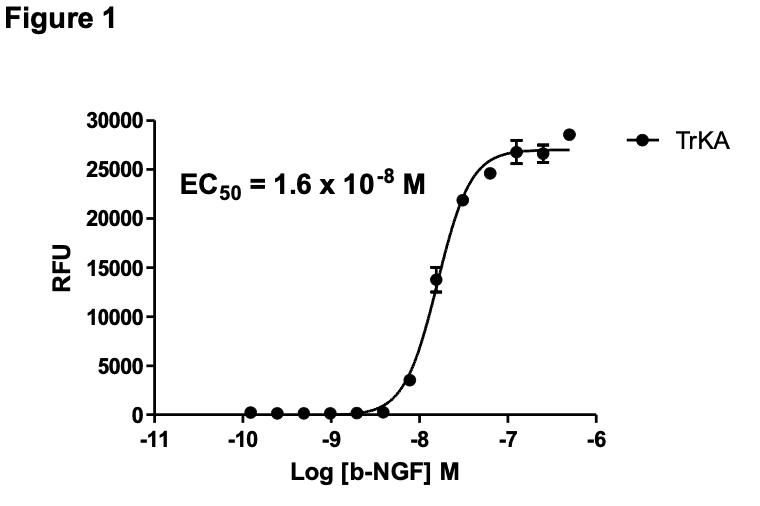Product Information
Catalog Number:
CK1001-1b
Lot Number:
CK1001-1b-102615
Quantity:
1 vial (2 x 106) frozen cells
Freeze Medium:
Sigma Freezing Medium (C-6164)
Host cell:
CHO-K1
Transfection:
Expression vector containing full-length human FGFR3 cDNA (GenBank Accession Number NM_001012331) and vector pGL4.30[luc2P/NFAT-RE/Hygro] (GenBank Accession Number DQ904462)
Recommended Storage:
Liquid nitrogen upon receiving
Propagation Medium: DMEM/F12, 10% FBS, 400 µg/mL G418; 250 µg/mL hygromycin
Stability:
In progress
Data Sheet
Background: Neurotrophic tyrosine kinase receptor type 1 (also called NTRK1; MTC; p140-TrkA; TRK; Trk-A; TRK1; TRKA) is a member of the neurotrophic tyrosine kinase receptor family. NTRK1 is a membrane bound receptor that phosphorylates itself and members of the MAPK pathway upon neurotrophin binding. Genetic variations in NTRK1 have been linked to anhidrosis, congenital insensitivity to pain, cancer, and mental retardation.
Application: Functional assays

Figure 1. Dose-dependent calcium flux upon treatment with ligand, monitored with FLIPR.
References:
Bradshaw, R.A. et al. “Receptor Tyrosine Kinase Signaling Mechanisms: Devolving TrkA Responses with Phosphoproteomics.” Advances in biological regulation 53.1 (2013): 87–96. PMC. Web. 4 Feb. 2015.
